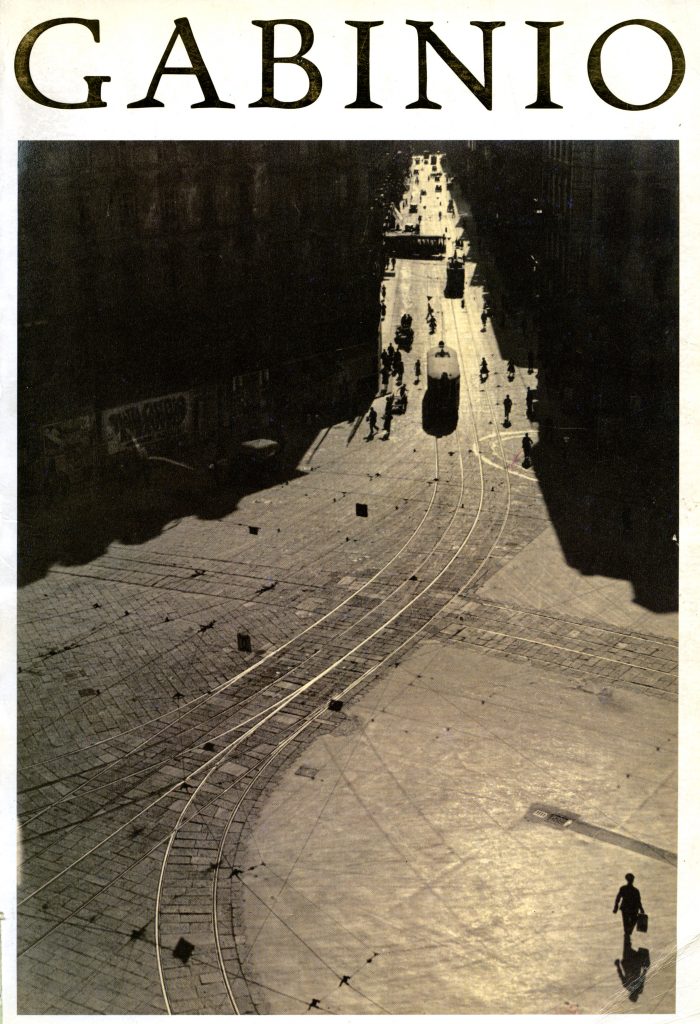by Luca Sorbo
_
All places have a soul that comes from their history and from the people who lived or worked there. The Civic Museums of Turin bear the trace of the work of the great scholar Vittorio Viale, who was director of this institution from 1930 to 1965. In addition to his merits as an art historian, it is important to point out his attention to photography. As early as 1932, in fact, he wrote an article about the need for a photographic archive to enhance and increase the cultural heritage of the city and the region. His attention to the potential of photographic language was confirmed after the tragic bombings of the Second World War, when he documented the damage caused by the conflict not only on monuments and museums, but on the entire city. The documentation for the exhibition on Piedmontese Baroque in 1963 was also impressive – as many as seven thousand images – which were not limited to the objects on display, but also gathered all the advertising and events that took place in the city on the occasion of the important exhibition.

Aware of this great tradition, Virginia Bertone, chief curator of the Civic Gallery of Modern and Contemporary Art (GAM) and and manager of the Art Library and Photographic Archive of the Turin Museums Foundation, told me about the characteristics of the institution’s Photographic Archive, which is essential for the activities not only of the GAM but also for the Museo Civico d’Arte Antica di Palazzo Madama (Civic Museum of Ancient Art) and the Museo di Arte Orientale (MAO, Museum of Eastern Art), that are also linked to the Turin Museums Foundation. The Archive holds about four hundred thousand phototypes, ranging from Nineteenth century to the present day, among which there are very precious examples: it is impossible not to mention the very famous daguerreotype created on 8 October 1839 by Enrico Federico Jest depicting the church of the Gran Madre di Dio which, to date, is the oldest daguerreotype in Italy. The work is part of the GAM collection, but falls within the remit of the Foundation’s Photographic Archive.
Other collections of great interest are the Bernieri collection, which documents the exhibition on Massimo D’Azeglio of 1863; the Vittorio Avondo collection, a painter and collector who preserved images from the nineteenth and early twentieth centuries; the Vittorio Viale collection, which gathers all the images he found in his long career as a scholar; the Stefano Bricarelli collection which covers a wide chronological span, from the 1930s and up until the ’80s; the Mario Gabinio collection, which goes from the end of the nineteenth century to the end of the 30s of the twentieth century; the Lorenzo Rovere collection, rich in reproductions of works of art. A particular, remarkable fund, which should be mentioned, is that of the Italian Photography Foundation (Fondazione Italiana per la Fotografia), established in 1992 and which, after numerous difficulties, was donated to the Piedmont Region, which assigned it to the Foundation’s archive. The fund collects images of some of the greatest Italian photographers of the twentieth century, such as Franco Fontana, Mario Giacomelli and many others; a precious heritage of about two thousand volumes on photography was also part of the donation.

The Photographic Archive of the Civic Museums of Turin was officially established in the 1930s and changed its name in 2002, following the establishment of the Fondazione Torino Musei (Turin Museums Foundation) by the City of Turin; it is located in via Magenta 31. All the valuable photographic heritage of this institution is managed by Virginia Bertone, assisted by the valiant Barbara Nepote and Mery Granata.
Not an easy undertaking in times of cuts in personnel and funds for cultural heritage. The strategy used is that of preventive conservation, with particular attention to the plates. All the photographic heritage is stored in a warehouse where the temperature and humidity parameters are ideal for these types of materials. The phototypes are, of course, all inventoried and partly cataloged and digitized. The archive is continually consulted by scholars who always need to verify their theses by comparing the originals.
Many publications have been produced using the preserved images, including the catalogues of the exhibitions dedicated to Mario Gabinio and Stefano Bricarelli, edited by Pier Angelo Cavanna, who is also the author of the in-depth study Vittorio Avondo and photography.

Stefano Musso, in charge of coordination between the Library and the Photographic Archive, told me, with understandable pride, of the very rich book heritage, which is often reflected in the images in the archive. The entire book catalog is online and can be consulted on the website Librinlinea.
The Archive therefore presents itself as one of the most interesting in Italy and will surely reserve pleasant surprises when all the photographs stored are studied in depth.
The Archive can only be consulted by appointment.
Website: https://www.fondazionetorinomusei.it/it/servizi-al-pubblico/archivio-fotografico
https://www.fondazionetorinomusei.it/it/servizi-al-pubblico/biblioteca-arte
November 30, 2021




